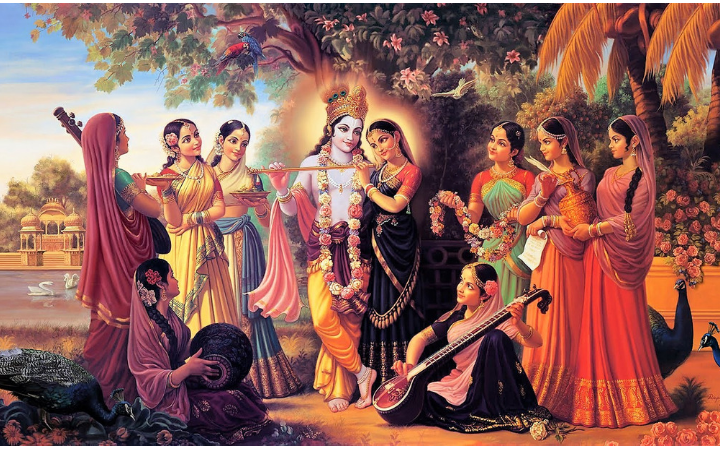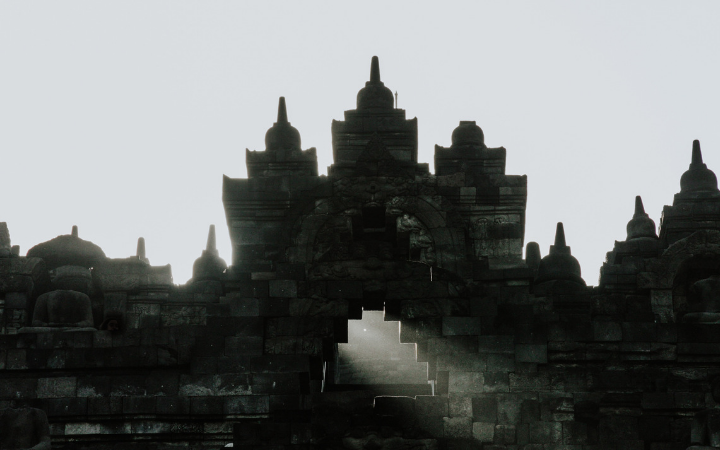Renowned Sanskrit scholar Howard J. Resnick, PhD, from Harvard University, offers a compelling rebuttal to the argument that the Bhagavad Gita is a later insertion into the Mahabharata. Resnick, a lifelong practitioner of the path of the Bhagavad Gita and bhakti-yoga, brings a unique blend of academic expertise and personal experience to his analysis, as follows:
Textual scholars don’t, as a group, believe the Gītā to be a later insertion to the Mahabharata. I will list here the main reasons that some scholars believe that. I will also explain why none of these points is very strong.
Argument 1. “The Mahabharata is primarily an epic narrative of war and politics, while the Bhagavad Gītā is a more focused philosophical dialogue between Arjuna and Krishna, discussing concepts like duty (dharma), devotion (bhakti), and knowledge (jnana).”
Bad argument. The Mahabharata (henceforth MBh) contains huge sections which are not ‘epic narratives’, such as the biggest of all sections: Bhīṣma’s deathbed teachings which cover a very wide range of topics such as: on certain auspicious days, is it better to give brahmanas sesame seeds or mustard seeds. Really! The Britannica states that over 80% of the MBh is not about the main narrative.
Argument 2. “The sanskrit style is somewhat more polished in the Gita.”
This is another bad argument since the Gita’s language is consonant with its special spiritual teachings, and is spoken by God, and redacted by Avatāra Vyāsa. Also, the MBh contains many styles of Sanskrit, including that of the Gita.
Argument 3. “Some argue that it is implausible that just before a great war, Krishna and Arjuna would discuss all these topics.”
We should keep in mind that Srila A.C. Bhaktivedanta Swami Prabhupada taught that Vyāsa did the final redaction of the Gītā. Also, the Gītā is not even close to making the list of implausible narrations in the MBh. Also, people back then had far superior attention spans and memories, and the generals at Kuruksetra knew there would be tragic loss of life and were probably thankful for the pause occasioned by the Gītā.
Argument 4. “The Gītā gives a unique philosophical perspective.”
In fact, the MBh is often very unphilosophical. It is to be expected that when God Himself speaks, something special occurs. Again, bad argument.
Argument 5. “There are inconsistencies in dating.”
This objection is based on a fabricated general dating system for Sanskrit literature. Here are some points on this topic in particular:
a. Max Muller originally dated chronological layers of Sanskrit śāśtras by applying known chronologies of European languages. The big flaw here is that language is a chief manifestation of culture, and India, for millenia, has been far more culturally conservative than Europe.
b. Further, whereas in the four Vedas, the actual physical sound of the phonemes stores and conveys their power, the power of the itihāsa-purāṇa literature, like MBh, is in the story itself. Thus the more recent Sanskrit in these genres, compared to the Vedas etc, may simply indicate that the language was updated for the stories.
Argument 6. “Some scholars claim that the MBh grew over time and the Gītā is an example of such growth.”
However, this by itself is just an idea, there is no proof that this happened.
Finally, because the Gītā has comparatively few verses, and is so sacred, it was very easily memorized, and brāhmaṇas were highly motivated to memorize it. Much less so for other sections of the MBh. So, whereas the huge MBh defied even the almost supernatural ability of brāhmaṇas to memorize sacred texts, the Gītā was very easy to memorize. The critical edition of the MBh shows very few text variants in the Gītā. The simple fact is that the Gītā is present in the critical edition, meaning it is found in both older and later manuscripts. If Gītā’s text is an “addition”, it’s difficult to argue that it’s a late addition or interpolation.
CONCLUSION: there is no definitive proof, or even serious suggestive evidence, that the Gītā is a later insertion into the MBh.









